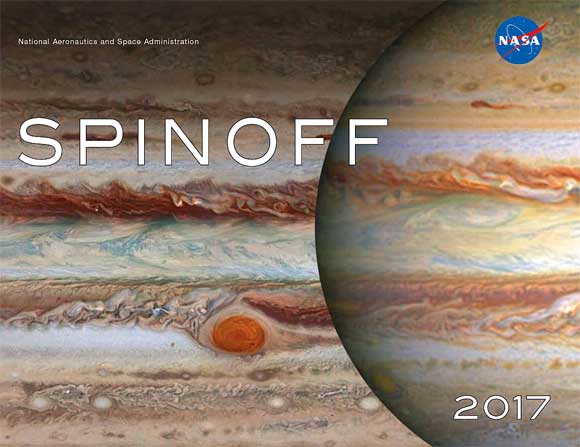Spinoff 2017 Magazine Shows How NASA Technology Makes a Difference On Earth
By Space Coast Daily // January 1, 2017
innovations developed by NASA
ABOVE: Enjoy the digital edition of the NASA 2017 Spinoff magazine.
NASA has released its Spinoff 2017 publication, which takes a close look at 50 different companies that are using NASA technology – innovations developed by NASA, with NASA funding, or under a contract with the agency – in products that we all benefit from.
Whether it’s the self-driving tractor that harvests food, cameras used in car-crash safety tests, or tools making brain surgery safer, NASA technology plays a significant role in our daily lives.
“The stories published in Spinoff represent the end of a technology transfer pipeline that begins when researchers and engineers at NASA develop innovations to meet mission needs,” said Stephen Jurczyk, associate administrator of the agency’s Space Technology Mission Directorate in Washington.
“This year’s spinoffs includes products and services at work in every sector of the economy. They are innovations that make people more productive, protect the environment, and much more.”

In Spinoff 2017, learn how:
NASA’s work at its Jet Propulsion Laboratory on precise GPS measurements enabled John Deere to build the first widely available self-driving tractors, which now work much of the world’s farmland; the agency’s longstanding investment at its Glenn Research Center in heat pipes helped Thermacore Inc. adapt the technology to wick away dangerous heat during brain surgery; a high-speed, high-resolution camera designed to monitor the Orion spacecraft’s landing parachutes at NASA’s Johnson Space Center now is improving data in automobile crash tests.
Other highlights include: laser imaging technology that discovered snow on Mars and now helps archeologists uncover humanity’s past; Earth-observing satellites that spot forest fires before they spread; and software that might help create supersonic jets we could all fly on.
“NASA’s ambitious mission goals require technology that pushes the envelope of what’s possible,” said Daniel Lockney, NASA’s Technology Transfer Program executive. “And these innovations have many secondary benefits for our lives and planet.”
CLICK HERE FOR NASA AND SPACE NEWS













